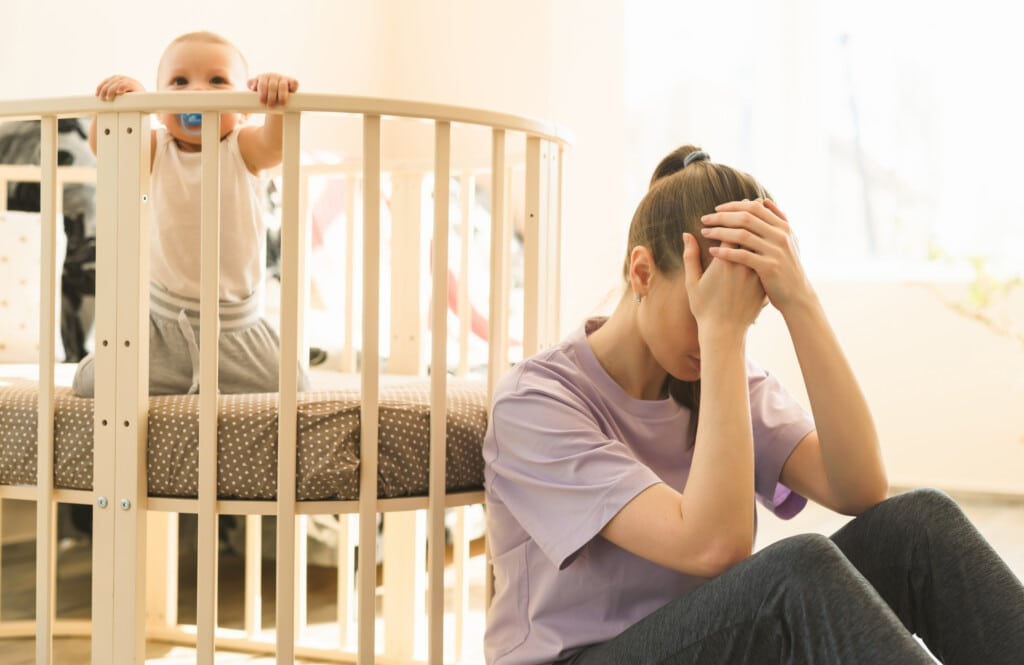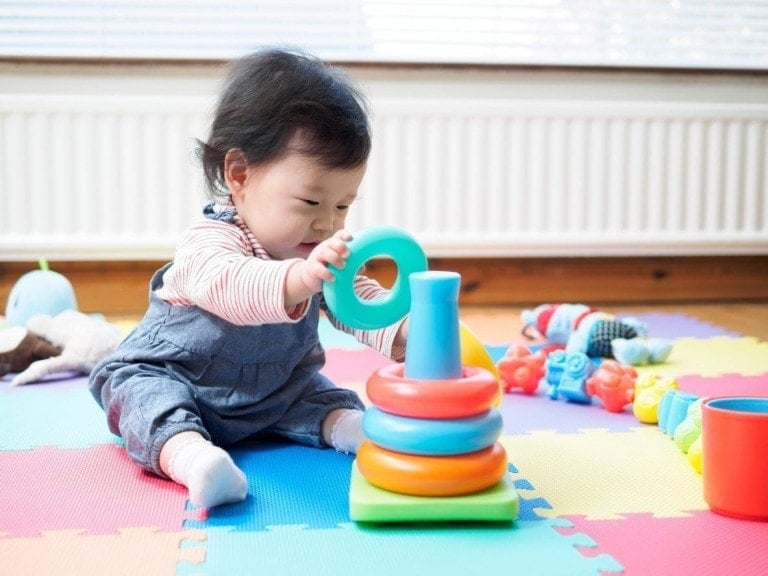If you are a parent, chances are you have experienced some level of sleep deprivation at some point in your parenting journey. Studies show that after having a baby, women lose an average of one hour of sleep per night.1 This is likely no surprise to you! From checking on your baby to responding to their wake-ups and giving middle-of-the-night feeds, there are many reasons that your sleep may be disrupted as you adjust to having a new baby in the home. And this level of sleep deprivation can often have significant effects on the whole family.
This is often when parents take to the internet or survey their mom friends to search for answers. They are desperate to figure out how to help their baby sleep better. One of the most common suggestions that parents will come across during this search is to start formal sleep training with their child to teach independent sleep skills. But what is sleep training? Is it effective? And what does this process look like?
Sleep Training: Helping Your Baby Sleep Better
Sleep training means different things to different people. The term “sleep training” has become quite controversial in parenting since it has gained popularity and recognition. Unfortunately, the internet doesn’t help much. You will likely find conflicting information that leaves you even more confused about what sleep training is and where to start. This is why we feel it is essential to educate parents about the concept of sleep training and the factors to consider as you decide what is best for your family.
What Is Sleep Training?
The idea behind sleep training is to help teach your child to sleep independently. This means that you shouldn’t have to respond to each and every wake-up throughout the night. However, when you look up the definition of sleep training, it is generally linked to the “cry-it-out” method, which is why many parents associate sleep training with this approach.
The truth is that there are many methods and approaches to sleep training. From gentle and responsive approaches to more rigid programs, many of them do include periods of crying, whether controlled or uncontrolled.
Many Methods Involve Self-Soothing
Sleep training is a relatively new concept, introduced only in the last few decades. Historically, it does emphasize self-soothing to ensure the child can fall asleep and stay asleep on their own. In the sleep training process, parents are typically instructed to follow a series of steps when their baby wakes up prematurely from naps or in the middle of the night. These are meant to gradually teach them to put themselves to sleep instead of relying on a parent or caregiver.
Many methods, such as the popular “Ferber method,” will also suggest rounds of timed intervention and soothing. This method encourages parents to wait until the timer reaches five, seven, or ten minutes before going back to the child if they are crying or whining for them. Some methods focus on performing quick check-ins without physical contact with the child. Other methods encourage picking up the child when necessary and setting them back down once they are calm or drowsy.
Parents report that after several days of following timed intervals and check-ins, their baby falls and stays asleep independently without many tears. They no longer need a parent to respond to their wake-ups, allowing both parents to get some much-needed rest, too!
How Effective is Sleep Training?
While many parents do find sleep training is the right fit for their family, there are concerns that I have with this process as a pediatric sleep expert. I have been working in this field for the past eleven years. The primary concern that I have with many sleep training programs is that the root cause of the child’s sleep challenges is often overlooked.
For example, I recently had a family with a five-month-old hire me for assistance after they had previously sleep-trained their baby. However, he was still waking up every hour throughout the night. The parents were exhausted (understandably so), so they tried a variation of the Ferber method. However, their baby would scream when they set him in his crib and left the room.
After asking A LOT of questions and doing some digging, I discovered that this baby wasn’t getting some fundamental needs met. He wasn’t getting an adequate amount of breast milk throughout the day. Nor was he getting the amount of day sleep recommended. Both of these needs are essential factors for consolidated night sleep.
Focus First on the Foundation of Sleep
In these situations, training the child to sleep independently does not address the underlying cause of the wake-ups. Instead, it acts as a band-aid. This is why parents need to try to get to the root of the child’s sleep issues before focusing on independent sleep skills.
Once parents address some of the foundational aspects of their child’s sleep, such as nutrition, sleep environment, overall health, activity, and routine, they will usually see a significant shift in their child’s sleep habits. Certain sleep challenges may be eliminated altogether. However, there are situations in which the child continues to struggle with sleep even after some of the root causes are addressed. This is when I will look to introduce some self-regulation strategies with parents if/when the child is ready.
Sleep Teaching vs. Training
In my practice, I typically refer to this process as “sleep teaching” rather than training. We are providing parents with education. We teach them how to respond to their babies based on their unique needs.
Sleep is a natural and biological process for all (babies included). They don’t necessarily need to be trained on how to sleep. But the reality is that so many things prevent them from getting the sleep they need, such as distractions, overstimulation, irregular sleep schedules, and underlying medical conditions, to name a few. As parents, it is our responsibility to remove these distractions and provide the optimal environment and periods of time for sleep for our children. Sometimes, that does mean providing them with opportunities to self-regulate.
I recommend this is done when the child is calm and well-supported rather than crying and overstimulated. Some of the ways parents can introduce self-regulation are by helping their baby find their hands to suck on, promoting the use of the pacifier, encouraging their baby to find their hands, feet, and hair, and helping them find new positions for sleep.
What to Expect During This Process
I try to remind all families that this process is just practice. Parents may decide a more formal training program is what they are looking for, but I typically find a gradual process is much more effective for everyone involved. Rather than following a strict set of rules for teaching self-regulation, I suggest practicing specific skills throughout the week, such as putting your baby down awake in the crib when they are happy and switching up your routine at night.
Generally, babies will start to show signs of self-regulation once they are ready as long as they have been given the tools to do so. You must meet your baby where they are developmentally to ensure you are helping them create long-term healthy habits.
Ultimately, every family has to choose what they feel is best for them and their child. That is going to look different for each individual. I always suggest that parents research and try out a few different approaches to see what feels most comfortable for them. Remember that you know your baby best, and your instincts are there for a reason. Don’t be afraid to use them!



































